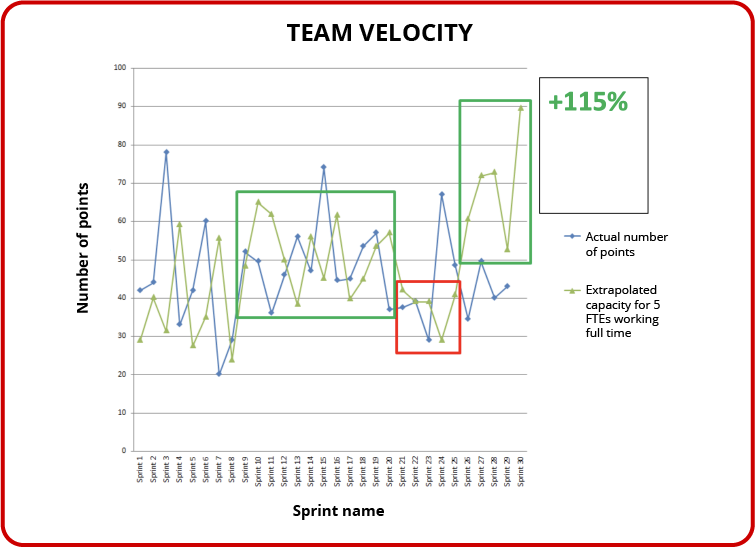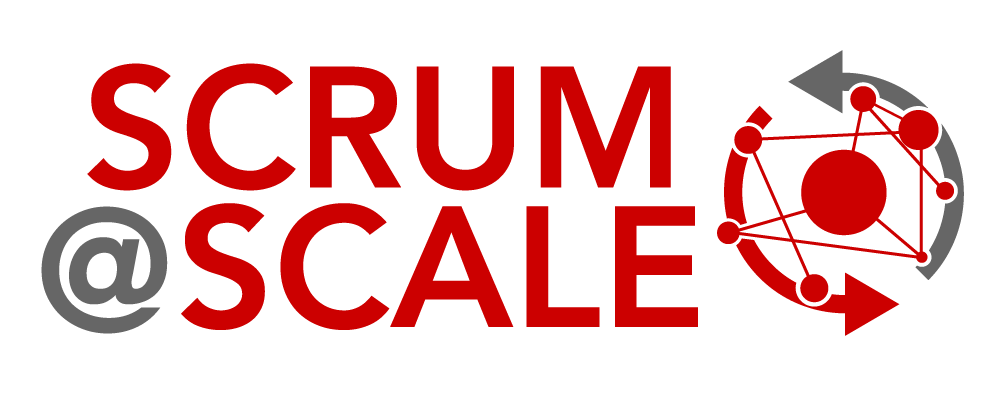Agile Education Case Study
On-Time Delivery in Logistics: A Scrum Story
Learn how Scrum helped this logistics service provider shift towards agility and successfully implement a large-scale warehouse management project under challenging conditions. The project, involving the setup of a Warehouse Management System (WMS) for a premium fashion client, faced issues like unclear requirements, strict deadlines, language barriers, and team distribution across countries. Scrum enabled the team to address these complexities by fostering adaptability, ownership, and collaboration, ultimately delivering the system on time and within budget. The project’s success catalyzed wider Scrum adoption within the organization, significantly enhancing productivity and Agile practices.
CASE STUDY SNAPSHOT
Industry: Logistics
Organization Size: Large
Topic: Agile Practice, Delivery and Velocity, Distributed Teams, Leadership Participation, Metrics and Transparency
Date: 2019
Website: https://valueinsights.ch/
LinkedIn: https://ch.linkedin.com/in/chardonneauromaric
Case Study
Summary: On-Time Delivery in Logistics: A Scrum Story
Romaric Chardonneau helped this logistics service provider use Scrum to implement a complex Warehouse Management System (WMS) for a premium fashion client, providing on-time delivery and successfully overcoming challenges such as tight deadlines, unclear requirements, and distributed teams. As a result of this success, the organization adopted Scrum in other parts of the organization, which drove significant improvements in productivity and agility.
Introduction
The logistics industry contributes nearly 12% of the global GDP. However, it has long struggled with manual processes, fragmented systems, and inefficiencies. Despite the rise of e-logistics startups, the top 10 freight forwarders control just 45% of the market share, creating significant room for digital disruption. As customer expectations evolve and e-commerce accelerates, logistics companies face growing pressure. They must provide on-time delivery, more reliably, and with greater transparency.
Amid these challenges, Agile practices like Scrum offer a powerful framework. Scrum drives innovation, enhances collaboration, and drives teams towards on-time delivery. This blog explores how Scrum was successfully implemented in a high-stakes logistics project for a leading Italian fashion company. It transformed traditional processes into Agile-driven solutions.


Business Context
The project involved a partnership between an Italian fashion retailer and a logistics service provider (LSP) who was responsible for managing supply chain operations across Europe. A robust Warehouse Management System (WMS) was essential to support seamless inventory management, order fulfillment, and distribution to retail outlets.
The stakes were high. A strict 8-month timeline aligned with the fashion calendar, where delays could disrupt entire seasons. Additionally, a €1 million penalty was looming for non-conformance. Delivering the project on time and within budget was not just a priority—it was a necessity.
Challenges
The project presented a complex array of challenges:
- High Stakes and Financial Risks: Missing the deadline would not only incur penalties but also risk reputational damage for both the retailer and the LSP.
- Evolving Requirements: The lack of detailed specifications and shifting priorities required a flexible approach to adapt to emerging needs.
- Language and Communication Barriers: Teams were split across Italy and the LSP’s base, with the Italian client communicating primarily in their native language, while the development team operated in English.
- Dependency on External Teams: The project relied heavily on third-party developers for electronic interfaces, introducing additional layers of coordination and potential delays.
- Geographically Distributed Teams: Team members were spread across multiple locations, making collaboration and alignment a challenge.
- Resistance to Agile Adoption: Executives and senior stakeholders, unfamiliar with Agile methodologies, initially doubted its relevance and effectiveness for this project.
Why Scrum?
The team selected Scrum as the ideal framework for this project because its flexibility and iterative delivery approach addressed the complexities of the high-stakes environment. Scrum’s adaptability allowed the team to manage evolving requirements through iterative Sprints without jeopardizing the overall timeline. The framework’s reliance on metrics, such as story points and velocity, provided clear insights into progress and team capacity. This helped ensure better planning and decision-making. By emphasizing team ownership and fostering cross-functional collaboration, Scrum bridged communication gaps and cultivated a strong sense of accountability among team members. The two-week Sprint cadence created a sustainable workflow, ensuring steady progress while preventing burnout. These features made Scrum a powerful driver of success for the project.
The Approach
The project succeeded due to several strategic practices that ensured smooth execution and delivery.
- First, the team prioritized enhanced transparency. To do this, they used tools like Kanban boards and held Sprint Reviews to maintain continuous visibility into progress. This fostered trust and collaboration among stakeholders.
- Next, proactive risk management played a crucial role. The team regularly reprioritized the backlog to accommodate evolving requirements and address unforeseen challenges. Altogether, this kept the team adaptive and focused.
- As the project neared completion, physical co-location and dry runs became essential. Team members gathered in the warehouse to simulate real-world scenarios. They identified potential issues and ensured a seamless transition during implementation.
- Finally, integrating external teams strengthened coordination. External developers participated in daily standups and Sprint Planning sessions, aligning their efforts with the project’s goals. This cohesive approach bridged gaps and contributed to unified execution.
Success Factors
Supportive leadership played a pivotal role in the project’s success. A forward-thinking manager championed Scrum, secured executive buy-in, and ensured the team had the necessary resources. A dedicated Product Owner (PO), fluent in both Italian and English, bridged cultural and communication gaps, ensuring the team clearly understood and effectively delivered requirements. To prepare the team, an initial Scrum training workshop provided foundational skills and generated enthusiasm for Agile practices. Embracing T-shaped skills, team members expanded beyond their core expertise, increasing flexibility and adaptability to shifting priorities. Additionally, regular Retrospectives fostered a culture of continuous improvement, enabling the team to identify bottlenecks, refine processes, and consistently enhance their performance. This combination of leadership, training, adaptability, and iterative learning created a robust foundation for project success.
Results
The implementation of Scrum transformed the project’s trajectory, delivering remarkable results:
- On-Time Delivery: The WMS was completed within the 8-month deadline, avoiding penalties and aligning perfectly with the retailer’s seasonal demands.
- Improved Team Velocity: Over 30 sprints, the team’s velocity improved by 115%, reflecting enhanced productivity and collaboration.
- Customer Satisfaction: As a result, the retailer praised the solution’s quality and the team’s responsiveness to their needs, solidifying the partnership.
- Broader Agile Adoption: Furthermore, inspired by this project’s success, the LSP expanded Agile practices to over 50% of its teams, driving organization-wide transformation.
Conclusion
Scrum can make the seemingly impossible possible. Thanks to empiricism, Scrum creates a reasonable amount of certainty and predictability in the uncertain and complex world of product development. Without a doubt, this logistics project would have utterly failed should the traditional project software development phases been strictly adhered to. The timelines for a project of this size were quite strict without any place for rework or changes in a waterfall process. Scrum ensured that the team had a working, tested and validated software at the end of every Sprint. It also enabled them to continuously reflect on their progress and brainstorm possible improvements.
Naturally, not all the aspects of this project were approached perfectly – Scrum is after all, simple to understand but difficult to master, but Scrum is what made this project a success. The team achieved on-time delivery, on budget and to the customer’s satisfaction. After this project, the regional WMS manager went on to a different department and assisted development teams in scaling Scrum. At this moment, over 50% of the development teams in the LSP organization have adopted Scrum and/or other Agile methodologies (Kanban, XP) thanks to earlier successes in the organization.
About Romaric Chardonneau
Romaric Chardonneau is an experienced Agile coach, Registered Scrum@Scale Trainer™ and Registered Scrum Trainer™ by Scrum Inc., former IT manager, and supply chain professional passionate about Agile at both the team and enterprise level. He is the co-founder of Value Insights GmbH, an Agile and IT Service Management coaching and training company located in Basel, Switzerland. He has 20 years of experience in project, program and portfolio management, product management, software development, vendor management, application management, IT Service Management, management of IT teams (onsite, remote) and IT supply chain. Romaric has a proven ability to recruit and coach talented and skilled IT professionals, resulting in high performing teams.
More Scrum@Scale Case Studies
How Lufthansa Systems Cut Delivery Delays by 90% Using Scrum at Scale
Enhancing Agile Workflows with Shorter Planning Cycles
Remote Startup Success: From Firefighting to Results
Agile Education Case Study Remote Startup Success: From Firefighting to Results This case study focuses on a remote startup that faced challenges with disorganized workflows, team burnout, and a lack of a clear product vision. The startup had no Product Owner, leading...



